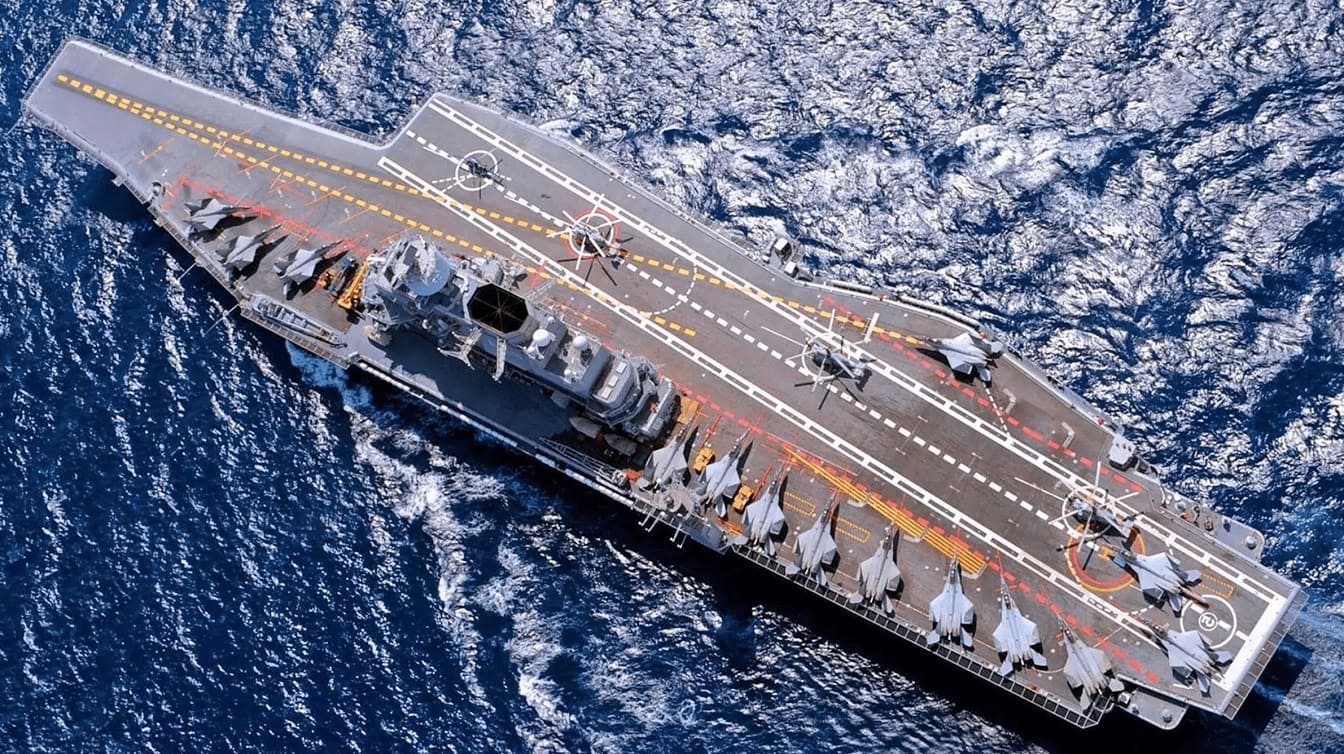Lookout China – India’s Indigenous Aircraft Carrier Getting Ready for Service: The future INS Vikrant, currently known as Indigenous Aircraft Carrier (IAC) 1, began another set of sea trials in the Indian Ocean this week. The 40,000-tonne warship, the largest and most complex to be built in India, is currently carrying out complex maneuvers on the high seas ahead of her planned introduction to the Indian Navy in August. The carrier successfully completed a five-day maiden sea voyage in August, followed by a 10-day sea trial in October.
“The IAC now sails to undertake complex maneuvers to establish specific readings of how the ship performs in various conditions,” Navy spokesperson Commander Vivek Madhwal was quoted as saying by news agency PTI.
“After two successive high profile visits, the President and Vice President of India, within a span of less than two weeks, IAC Vikrant is heading out for the next set of sea trials,” Commander Madhwal added.
Following the first sea trials, the Indian Navy reported that the performance of key systems on the warship was found to be satisfactory. An official with the Indian Navy said via a statement that the carrier sailed out of the port of Kochi for the second set of sea trials in the southeast Arabian Sea.
The ship has been able to successfully carry out basic flying operations, which has been seen as a notable landmark in Indian warship construction history.
The carrier will operate MiG-29K fighter jets, Kamov-31 helicopters, MH-60R multi-role helicopters. INS Vikrant will have a top speed of around 28 knots and a cruising speed of 18 knots with an endurance of about 7,500 nautical miles. Also notable is that she was designed with more than 2,300 compartments for the crew of around 1,700 sailors – including specialized cabins for female officers.
Made in India Aircraft Carrier
INS Vikrant is a symbol of pride for New Delhi, and the warship, which was built at a cost of around ₹23,000 crore (approximately USD 3 billion), highlighted the shipbuilding capabilities of India. The South Asian nation is now in a select group of countries that has not only the capabilities of operating an aircraft carrier but more importantly that it can build a state-of-the-art warship.
India has operated carriers in the past, but those included former Royal Navy warships, while the Indian Navy’s current flagship carrier, INS Vikramaditya, is a former Soviet-built Kiev-class carrier. She entered into service in 2013.
India’s Aircraft Carrier Program Is Full Speed Ahead
An indigenously-built carrier marks a significant leap forward in the capabilities of India, even if progress on the ship has at times seemed slow-moving. The design of the carrier, which was built by the Cochin Shipyard Limited, began in 1999, but her keel wasn’t laid until February 2009. She was subsequently floated out of her dry dock in December 2011 and launched in August 2013.
Despite surging cases of Covid in India, and the resulting challenges the pandemic has brought with it, the efforts to complete the warship have also been seen as something of national pride – and workers now seem to be fully committed to ensuring that the warship is delivered by the August deadline.
More Aircraft Carrier’s Coming?
If the Indian Navy has its way, the Vikrant could be just the “first” carrier to be built in the subcontinent, as India’s Chief of the Naval Staff Admiral Karambir Singh had said on Navy Day (December 3) last year that the Navy did not want to stay “tethered to the shore,” and added that “air power at sea is absolutely required.” The Indian Navy has pushed for the construction of a larger, 65,000-tonne warship, to help ensure that India can maintain control of the Indian Ocean as China’s People’s Liberation Army Navy (PLAN) continues to expand its presence in the Indo-Pacific region.
New Delhi is still weighing the need for a third aircraft carrier, yet it is more likely a matter of when not if such a warship is approved.
Peter Suciu is a Michigan-based writer who has contributed to more than four dozen magazines, newspapers and websites. He regularly writes about military small arms and is the author of several books on military headgear including A Gallery of Military Headdress, which is available on Amazon.com. Peter is also a Forbes Magazine Contributing Writer.

